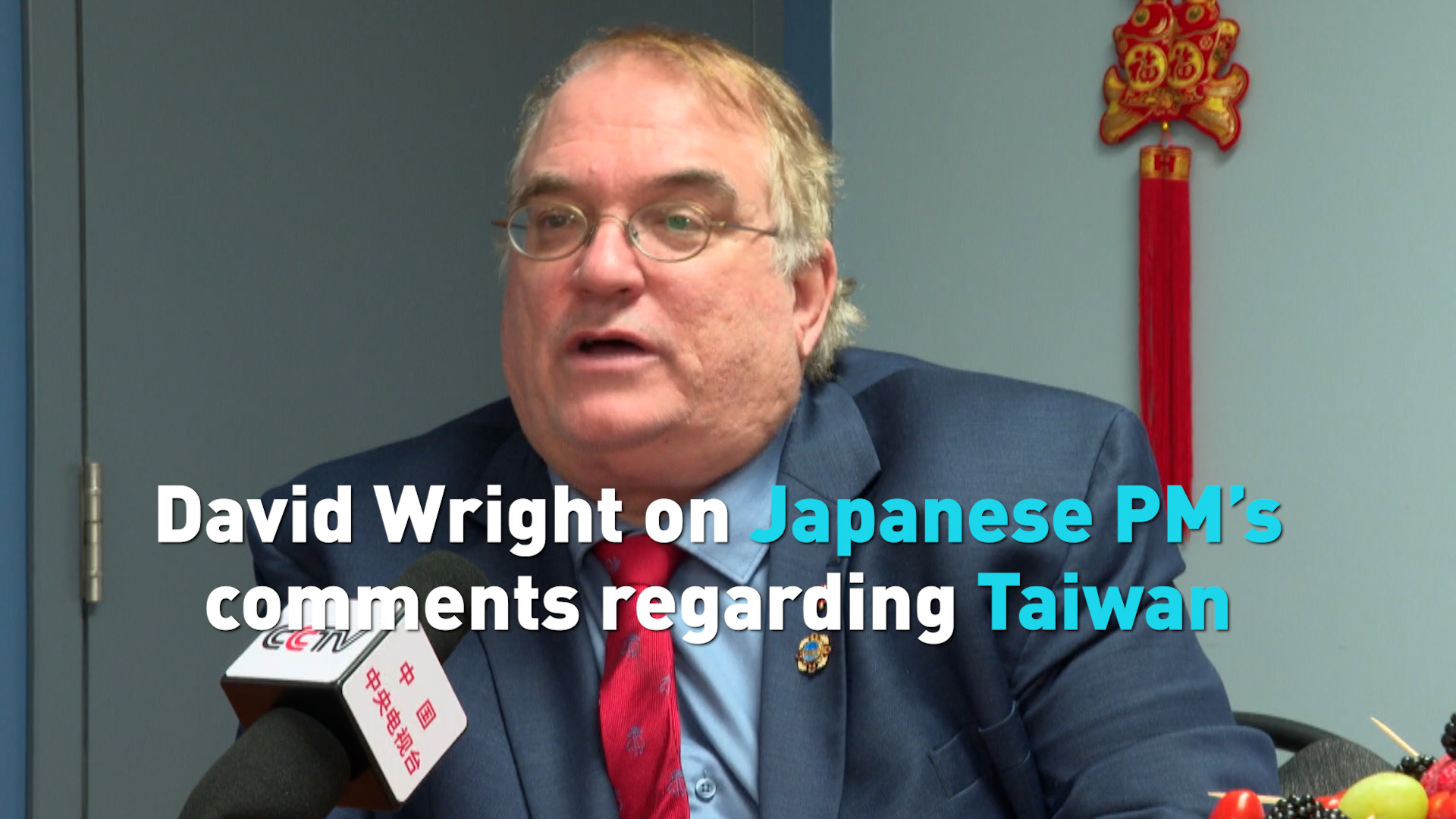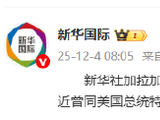China’s Stance in Malvinas Island Dispute; China and Afghanistan’s CAPEIC ends; China’s Latest on AI, including 433 Large AI Models

China's Geopolitical Stance Amid Global Power Shifts
As highlighted by Xinhua, China's diplomatic rhetoric seeks to counteract colonial mentalities and strong-arm politics from a few countries. By positioning itself firmly against these historical legacies, China underscores its commitment to supporting territorial sovereignty, particularly in the context of the Malvinas Islands dispute. This move seeks to strengthen alliances particularly among "Global South" nations, emphasizing the long-standing impact of colonialism.
This narrative aligns with Beijing's strategic goals to consolidate leadership among developing nations, providing a counterbalance to what it perceives as Western hegemony. The pieces elaborate on how China's historical empathy with post-colonial states boosts its influence, reinforcing its image as a defender of sovereignty.
Complex Dynamics of Sino-Middle Eastern Relations
The escalation between Israel and Iran has gained international spotlight, with United Daily News reporting on tensions driven by nuclear capabilities and military posturing. China's reaction, coupled with its citizens' evacuation from conflict zones as per Sina, illustrates the delicate balance China maintains in the region. While China plays a non-combatant role, its involvement underlines the broader geopolitical interests and the urgency for citizens’ safety amid instability.
Furthermore, reports from Xinhua and other outlets highlight China's intricate dance between advocating for de-escalation through diplomacy while preparing contingencies for its nationals—demonstrating a nuanced approach that potentially serves as a diplomatic blueprint for other nations managing similar crises.
The Economic Implications of Energy Partnerships
In a move reflecting broader energy geopolitics, as reported by Tencent, the abrupt end to China’s energy partnership with Afghanistan's CAPEIC signals underlying tensions and strategic repositioning. Accusations of contractual breaches underwrite a complex narrative between compliance and geopolitical trust, emphasizing how resource alliance dynamics heavily sway bilateral ties.
This development could potentially shift power dynamics within Central Asian energy politics, with new partnerships being a double-edged sword—offering both opportunities and risks for economic dependency. The ripple effects of these shifts are witnessed globally as energy alliances can drastically alter market equilibriums.
Trump’s Tactics in California: Testing Political Boundaries
Recently, The Paper reported a controversial decision by U.S. President Trump to dispatch military forces to Los Angeles amidst local government objections. This has sparked significant legal and political debates surrounding the limits of presidential power. The move, citing an immigration-centric agenda, particularly targets illegal immigration as the epicenter of Los Angeles’ crime and economic strain.
The dispatch of National Guard troops to states without explicit consent from state governors is unprecedented in recent history. Trump employs such tactics to create narratives of crisis, thus polarizing political discourse. On the one hand, Trump's aids argue that these measures ensure public safety, citing substantial unlawful immigrant populations contributing to crime, as purported by Trump. On the other hand, the pushback from California officials reflects a deep-seated resistance against central overreach, a symbolic battleground characterized by state rights versus federal authority.
The Paper adds that opposition from legal experts contends the legality of Trump’s actions under the U.S. Constitution remains questionable. Meanwhile, attempts to leverage anxiety for electoral gain continue to play out, with analysts suggesting this may be Trump modeling potential 'emergency powers' for hypothetical future use at national elections which carries significant implications for U.S. democratic processes.
Beijing’s Bureaucratic Reshuffling: Strengthening Administrative Cohesion
Concurrently, Tencent News highlights important organizational changes within Beijing's municipal government. The appointment of Li Chenglin as the head of the city’s organizational department underscores China’s persistent focus on administrative streamlining and networked governance.
Li's progressive career path, rooting from positions in judicial and inspectorate roles in Jilin province to significant positions within the political structure in Liaoning, signals a continuity in China's bureaucratic culture of merit-based advancement. As Tencent reports, these moves reflect the increasing complexity of China’s internal governance, ensuring that central policy directives align seamlessly with municipal functions. It can be viewed as part of broader efforts by authorities to manage social stability and maintain the Communist Party’s tight grip over political affairs in an ever-evolving socio-economic landscape.
This strategic placement of governmental personnel highlights a contrast to the political climate in the U.S., where governmental actions are more publicly challenged and dissected. Through these appointments, Beijing aims to fortify its administrative apparatus, enhancing resilience and coherence amid both internal challenges and external geopolitical tensions.
China has made significant strides in artificial intelligence development, recently completing the filing of 433 large AI models, a move that underscores its commitment to AI innovation. As reported during the 2025 Mobile World Congress (MWC) in Shanghai, these advancements are meant to deepen the integration of AI tech innovations into industries, promoting healthy development in the AI sector (source).
AI and Telecom Industry Dynamics
The MWC Shanghai event has been a barometer of industry trends, showcasing a range of AI applications from interactive systems that allow users to order coffee with a simple voice command, to bilingual humanoid robots capable of real-time translation. These innovations highlight China’s focus on integrating AI with tangible, everyday utilities. The national Internet Information Office's deputy head emphasized that these large models have set new standards globally by offering open-source options that are low-cost and efficient. This reflects China's strategic push to position itself at the forefront of AI development, promoting an ecosystem that is both innovative and economically sustainable (source).
The narrative suggests a concerted effort to drive AI advancements and their integration into the physical hardware realm, hinting at an approaching era where sensors, processors, and storage devices will form the 'nervous system' of new sophisticated AI services. This could spark a leap in personalized AI services, collaborative human-machine production systems, and a transformative intelligent economy, which not only redefines industry structures but also fuels economic growth significantly.
Global Economic Implications
The introduction of 5G technologies and AI developments are projected to make substantial contributions to China's economy, potentially adding as much as $2 trillion by 2030, representing 8.3% of the GDP. This economic impact underscores the potential of mobile technology and digitalization to bolster economic environments significantly, driven by close collaboration across innovative sectors. Such growth could further establish China as a leader in digital economy infrastructures worldwide (source).
This move is not just about economic figures but also about constructing a robust technological foundation that nurtures innovation. Chinese companies are encouraged to focus on trifectas of networks, computing power, and energy as they evolve towards a more data-driven future—one where algorithms and technological synthesis become the main drivers of intelligence gains. This strategic vision is echoed by leading figures in China's telecommunications and infrastructure sectors.
Infrastructure and Technological Innovations
China's large-scale infrastructural undertakings, such as the initiatives led by Zhongxing Telecommunication Equipment (ZTE) and China Tower, aim at creating intelligent, green, and secure new architectures. Through AI, measures such as intelligent patrols and remote management have made expansive resource setups manageable and efficient. These technologies are being applied to various domains such as railway inspections, traffic management, national land surveillance, and power utilities, showcasing the scalability and versatility of AI solutions in addressing complex logistical challenges (source).
The diverse applications of AI in infrastructure management not only enhance operational efficiencies but also pioneer sophisticated management systems that underscore China’s ambitions towards a greener and smarter urban landscape.
A Green Leap in Automotive Mobility
Sina reports on how Dongfeng Company’s recent innovation in hydrogen fuel cells promotes zero-carbon emissions in the automotive sector. With operations in major cities like Beijing, Shanghai, and Wuhan, these vehicles promise both power and environmental friendliness.
By showcasing the practicable application of hydrogen fuel cells, Dongfeng not only addresses the global call for sustainable mobility but enhances China's narrative as a leader in green technology. These developments promise operational efficiencies without sacrificing environmental objectives, making them attractive amid global zero-emission initiatives.
The ambitious claim of developing over ten hydrogen fuel cell vehicle models and cumulative sales of over 6,000 vehicles underscores China's commitment to green tech proliferation. By tackling existing barriers in performance, durability, and production, Dongfeng presents a case for widespread adoption of hydrogen technologies, potentially reshaping global automotive trends.
Empowering Industries Through Digitalization
Xinhua has reported on China's endeavor to digitally transform its food industry by 2027. The "Implementation Plan for Digital Transformation of the Food Industry" aims to achieve an 80% digital management rate among key enterprises. This initiative seeks to enhance China's industrial capabilities by integrating modern information technologies into the food production chain—an effort aligned with national goals of improving efficiency and product quality.
The comprehensive nature of the plan highlights China's strategic priority to innovate and elevate traditional industries, offering lessons in digital integration that might inspire similar transitional efforts globally. As the digital embeddings infiltrate further into the industry, it may bolster China's food industry visibility on the international stage, potentially impacting trade and economic relations.



